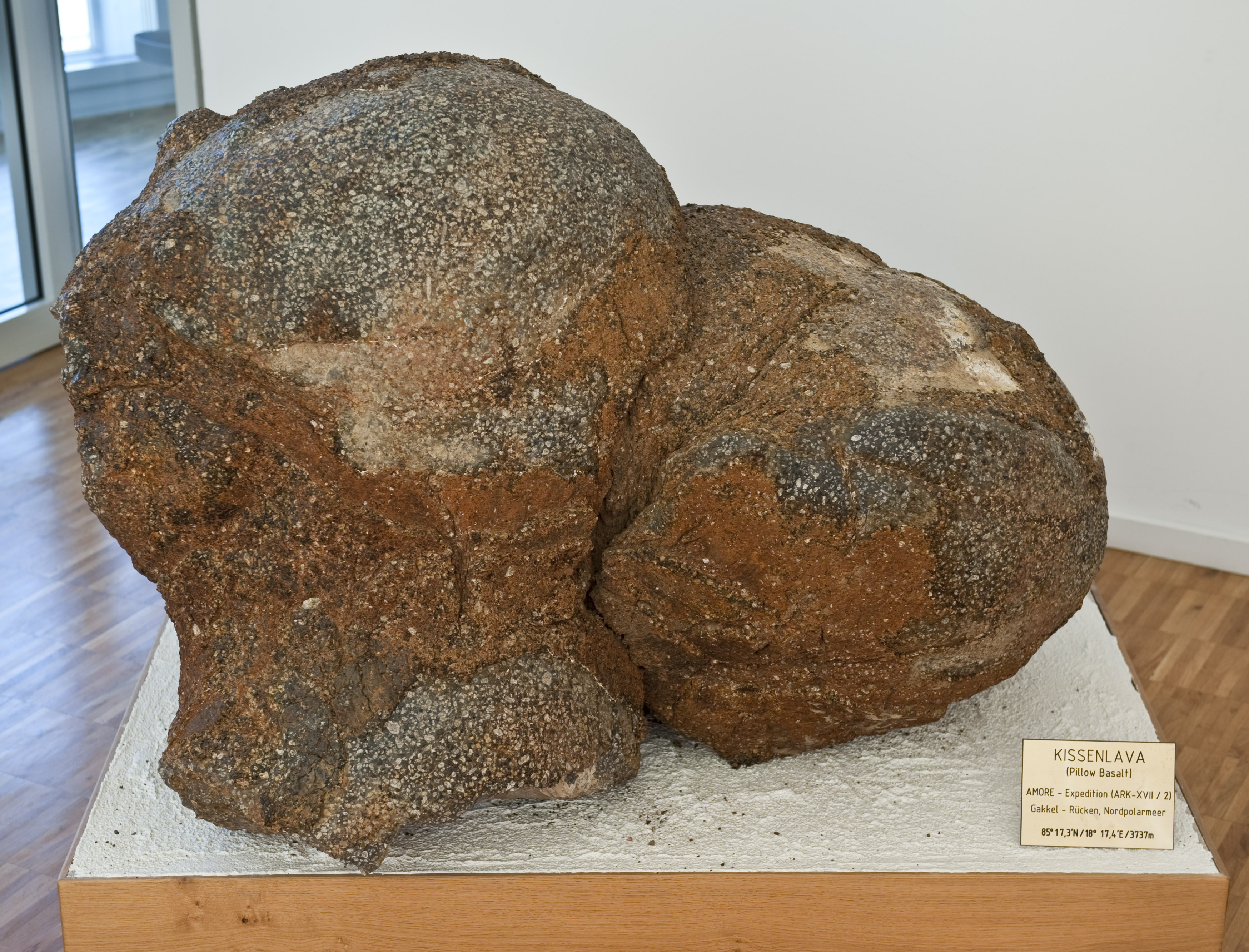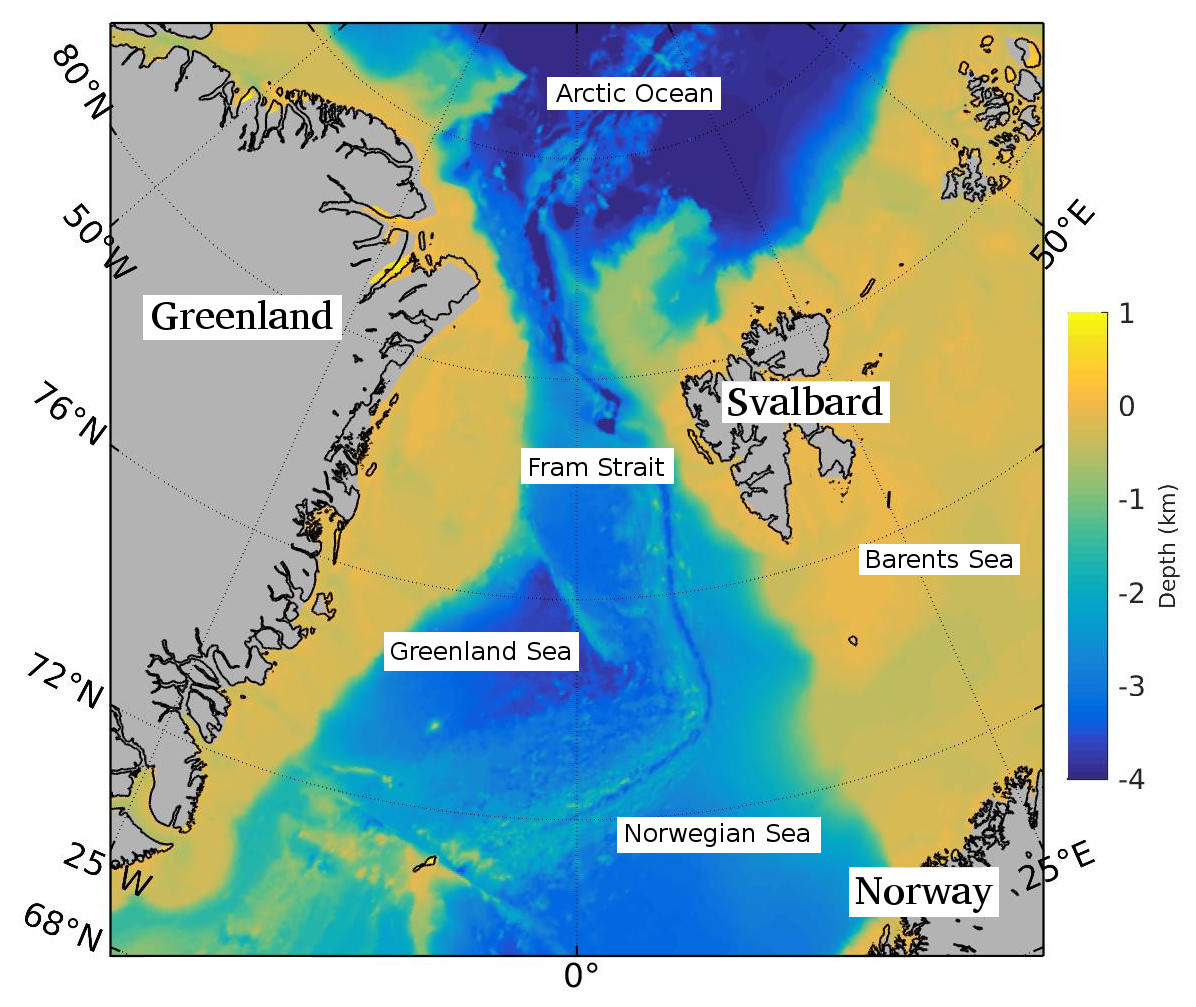|
Nansen Basin
The Nansen Basin (also Central Basin, formerly Fram Basin) is an abyssal plain with water-depths of around 3 km in the Arctic Ocean and (together with the deeper Amundsen Basin) part of the Eurasian Basin. It is named after Fridtjof Nansen. The Nansen Basin is bounded by the Gakkel Ridge on the one side and by the Barents Sea continental shelf on the other. The lowest point of the Arctic Ocean lies within the Nansen Basin and has a depth of 4,665 m. The Barents Abyssal Plain is located at the center of the Fram Basin. Oceanographic situation The Russian-American cooperation Nansen and Amundsen Basin Observational SystemNABOS aims "to provide a quantitative observationally based assessment of circulation, water mass transformations, and transformation mechanisms in the Eurasian and Canadian Basins of the Arctic Ocean". See also * Fram Strait The Fram Strait is the passage between Greenland and Svalbard, located roughly between 77°N and 81°N latitudes and centered on ... [...More Info...] [...Related Items...] OR: [Wikipedia] [Google] [Baidu] |
Arctic Profile Hg
The Arctic ( or ) is a polar regions of Earth, polar region located at the northernmost part of Earth. The Arctic consists of the Arctic Ocean, adjacent seas, and parts of Canada (Yukon, Northwest Territories, Nunavut), Danish Realm (Greenland), Finland, Iceland, Norway, Russia (Murmansk Oblast, Murmansk, Siberia, Nenets Autonomous Okrug, Nenets Okrug, Novaya Zemlya), Sweden and the United States (Alaska). Land within the Arctic region has seasonally varying snow and sea ice, ice cover, with predominantly treeless permafrost (permanently frozen underground ice) containing tundra. Arctic seas contain seasonal sea ice in many places. The Arctic region is a unique area among Earth's ecosystems. The cultures in the region and the Arctic indigenous peoples have adapted to its cold and extreme conditions. Life in the Arctic includes zooplankton and phytoplankton, fish and marine mammals, birds, land animals, plants and human societies. Arctic land is bordered by the subarctic. De ... [...More Info...] [...Related Items...] OR: [Wikipedia] [Google] [Baidu] |
Abyssal Zone
The abyssal zone or abyssopelagic zone is a layer of the pelagic zone of the ocean. "Abyss" derives from the Greek word , meaning bottomless. At depths of , this zone remains in perpetual darkness. It covers 83% of the total area of the ocean and 60% of Earth's surface. The abyssal zone has temperatures around through the large majority of its mass. Due to there being no light, there are no plants producing oxygen, which instead primarily comes from ice that had melted long ago from the polar regions. The water along the seafloor of this zone is actually devoid of oxygen, resulting in a death trap for organisms unable to quickly return to the oxygen-enriched water above. This region also contains a much higher concentration of nutrient salts, like nitrogen, phosphorus, and silica, due to the large amount of dead organic material that drifts down from the above ocean zones and decomposes. The water pressure can reach up to 76 megapascal. The area below the abyssal zone is the sp ... [...More Info...] [...Related Items...] OR: [Wikipedia] [Google] [Baidu] |
Kilometre
The kilometre ( SI symbol: km; or ), spelt kilometer in American English, is a unit of length in the International System of Units (SI), equal to one thousand metres (kilo- being the SI prefix for ). It is now the measurement unit used for expressing distances between geographical places on land in most of the world; notable exceptions are the United States and the United Kingdom where the statute mile is the unit used. The abbreviations k or K (pronounced ) are commonly used to represent kilometre, but are not recommended by the BIPM. A slang term for the kilometre in the US, UK, and Canadian militaries is ''klick''. Pronunciation There are two common pronunciations for the word. # # The first pronunciation follows a pattern in English whereby metric units are pronounced with the stress on the first syllable (as in kilogram, kilojoule and kilohertz) and the pronunciation of the actual base unit does not change irrespective of the prefix (as in centimetre, millimetre ... [...More Info...] [...Related Items...] OR: [Wikipedia] [Google] [Baidu] |
Arctic Ocean
The Arctic Ocean is the smallest and shallowest of the world's five major oceans. It spans an area of approximately and is known as the coldest of all the oceans. The International Hydrographic Organization (IHO) recognizes it as an ocean, although some oceanographers call it the Arctic Mediterranean Sea. It has been described approximately as an estuary of the Atlantic Ocean. It is also seen as the northernmost part of the all-encompassing World Ocean. The Arctic Ocean includes the North Pole region in the middle of the Northern Hemisphere and extends south to about 60°N. The Arctic Ocean is surrounded by Eurasia and North America, and the borders follow topographic features: the Bering Strait on the Pacific side and the Greenland Scotland Ridge on the Atlantic side. It is mostly covered by sea ice throughout the year and almost completely in winter. The Arctic Ocean's surface temperature and salinity vary seasonally as the ice cover melts and freezes; its salinity is t ... [...More Info...] [...Related Items...] OR: [Wikipedia] [Google] [Baidu] |
Amundsen Basin
The Amundsen Basin, with depths up to , is the deepest abyssal plain in the Arctic Ocean, and contains the geographic North Pole. The Amundsen Basin is embraced by the Lomonosov Ridge (from to ) and the Gakkel Ridge (from to ). It is named after the polar researcher Roald Amundsen. Together with the Nansen Basin, the Amundsen Basin is often summarized as Eurasian Basin. The Russian-American cooperation Nansen and Amundsen Basin Observational SystemNABOS aims "to provide a quantitative observationally based assessment of circulation, water mass transformations, and transformation mechanisms in the Eurasian and Canadian Basins of the Arctic Ocean". Formation The Amundsen Basin formed during the Cenozoic Era from seafloor spreading. See also *Wilkes Basin The Wilkes Basin is a large subglacial basin situated generally southward of George V Coast and westward of Prince Albert Mountains in East Antarctica. The feature is approximately 1400 km long and 400 km wide. The Wi ... [...More Info...] [...Related Items...] OR: [Wikipedia] [Google] [Baidu] |
Eurasian Basin
The Eurasian Basin, or Eurasia Basin, is one of the two major basins into which the Arctic Basin of the Arctic Ocean is split by the Lomonosov Ridge (other being the Amerasia Basin). The Eurasia Basin may be seen as an extension of the North Atlantic Basin through Fram Strait. It is further split by the mid-ocean Gakkel Ridge into the Nansen Basin and the Amundsen Basin. The latter basin is the deepest one of the Arctic Ocean and the geographic North Pole is located there. The Eurasian Basin is bounded by Greenland, the Lomonosov Ridge, and the shelves of the Laptev Sea, Kara Sea and Barents Sea. The maximum depth within the Eurasian Basin is reached at the Litke Deep with 5449 m depth. Today, the Gakkel Ridge is the site of some of the slowest seafloor spreading on the Earth, with 10 mm/yr near the Fram Strait and 6 mm/yr near the Laptev Sea. Initial opening of the Eurasian Basin is constrained by magnetic anomaly and geologic information to the Cenozoic The Cenozoic ( ... [...More Info...] [...Related Items...] OR: [Wikipedia] [Google] [Baidu] |
Fridtjof Nansen
Fridtjof Wedel-Jarlsberg Nansen (; 10 October 186113 May 1930) was a Norwegian polymath and Nobel Peace Prize laureate. He gained prominence at various points in his life as an explorer, scientist, diplomat, and humanitarian. He led the team that made the first crossing of the Greenland interior in 1888, traversing the island on cross-country skis. He won international fame after reaching a record northern latitude of 86°14′ during his ''Fram'' expedition of 1893–1896. Although he retired from exploration after his return to Norway, his techniques of polar travel and his innovations in equipment and clothing influenced a generation of subsequent Arctic and Antarctic expeditions. Nansen studied zoology at the Royal Frederick University in Christiania and later worked as a curator at the University Museum of Bergen where his research on the central nervous system of lower marine creatures earned him a doctorate and helped establish neuron doctrine. Later, neuroscientist Sa ... [...More Info...] [...Related Items...] OR: [Wikipedia] [Google] [Baidu] |
Gakkel Ridge
The Gakkel Ridge (formerly known as the Nansen Cordillera and Arctic Mid-Ocean Ridge) is a mid-oceanic ridge, a divergent tectonic plate boundary between the North American Plate and the Eurasian Plate. It is located in the Eurasian Basin of the Arctic Ocean, between Greenland and Siberia, and has a length of about 1,800 kilometers (approximately 1,120 miles). Geologically, it connects the northern end of the Mid-Atlantic Ridge with the Laptev Sea Rift. The existence and approximate location of the Gakkel Ridge were predicted by Soviet polar explorer Yakov Yakovlevich Gakkel, and confirmed on Soviet expeditions in the Arctic around 1950. The Ridge is named after him, and the name was recognized in April 1987 by SCUFN (under that body's old name, the Sub-Committee on Geographical Names and Nomenclature of Ocean Bottom Features). The ridge is the slowest known spreading ridge on earth, with a rate of less than one centimeter per year. Until 1999, it was believed to be non-volcani ... [...More Info...] [...Related Items...] OR: [Wikipedia] [Google] [Baidu] |
Barents Sea
The Barents Sea ( , also ; no, Barentshavet, ; russian: Баренцево море, Barentsevo More) is a marginal sea of the Arctic Ocean, located off the northern coasts of Norway and Russia and divided between Norwegian and Russian territorial waters.World Wildlife Fund, 2008. It was known among Russians in the Middle Ages as the Murman Sea ("Norse Sea"); the current name of the sea is after the historical Netherlands, Dutch navigator Willem Barentsz. The Barents Sea is a rather shallow Continental shelf, shelf sea, with an average depth of , and it is an important site for both fishing and hydrocarbon exploration.O. G. Austvik, 2006. It is bordered by the Kola Peninsula to the south, the shelf edge towards the Norwegian Sea to the west, and the archipelagos of Svalbard to the northwest, Franz Josef Land to the northeast and Novaya Zemlya to the east. The islands of Novaya Zemlya, an extension of the northern end of the Ural Mountains, separate the Barents Sea from the Kar ... [...More Info...] [...Related Items...] OR: [Wikipedia] [Google] [Baidu] |
Continental Shelf
A continental shelf is a portion of a continent that is submerged under an area of relatively shallow water, known as a shelf sea. Much of these shelves were exposed by drops in sea level during glacial periods. The shelf surrounding an island is known as an ''insular shelf''. The continental margin, between the continental shelf and the abyssal plain, comprises a steep continental slope, surrounded by the flatter continental rise, in which sediment from the continent above cascades down the slope and accumulates as a pile of sediment at the base of the slope. Extending as far as 500 km (310 mi) from the slope, it consists of thick sediments deposited by turbidity currents from the shelf and slope. The continental rise's gradient is intermediate between the gradients of the slope and the shelf. Under the United Nations Convention on the Law of the Sea, the name continental shelf was given a legal definition as the stretch of the seabed adjacent to the shores of a par ... [...More Info...] [...Related Items...] OR: [Wikipedia] [Google] [Baidu] |
Metre
The metre (British spelling) or meter (American spelling; see spelling differences) (from the French unit , from the Greek noun , "measure"), symbol m, is the primary unit of length in the International System of Units (SI), though its prefixed forms are also used relatively frequently. The metre was originally defined in 1793 as one ten-millionth of the distance from the equator to the North Pole along a great circle, so the Earth's circumference is approximately km. In 1799, the metre was redefined in terms of a prototype metre bar (the actual bar used was changed in 1889). In 1960, the metre was redefined in terms of a certain number of wavelengths of a certain emission line of krypton-86. The current definition was adopted in 1983 and modified slightly in 2002 to clarify that the metre is a measure of proper length. From 1983 until 2019, the metre was formally defined as the length of the path travelled by light in a vacuum in of a second. After the 2019 redefi ... [...More Info...] [...Related Items...] OR: [Wikipedia] [Google] [Baidu] |
Fram Strait
The Fram Strait is the passage between Greenland and Svalbard, located roughly between 77°N and 81°N latitudes and centered on the prime meridian. The Greenland and Norwegian Seas lie south of Fram Strait, while the Nansen Basin of the Arctic Ocean lies to the north. Fram Strait is noted for being the only deep connection between the Arctic Ocean and the World Oceans. The dominant oceanographic features of the region are the West Spitsbergen Current on the east side of the strait and the East Greenland Current on the west. Description Fram Strait is the northernmost ocean area having ice-free conditions throughout the year. The width of the strait is about 450 km, but because of the wide continental shelves of Greenland and Spitsbergen, the deep portion of Fram Strait is only about 300 km wide. The ocean over the Greenland continental shelf is often covered with ice. Within Fram Strait, the sill connecting the Arctic and Fram Strait is 2545 m deep. The Knipo ... [...More Info...] [...Related Items...] OR: [Wikipedia] [Google] [Baidu] |








